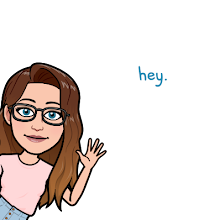What My Mother Doesn't Know
by Sonya Sones
Bibliography:
Sones, Sonya. What My Mother Doesn't Know. New York: Simon Pulse, 2004. Print.
Summary: Sophie is fifteen and a freshman in high school, and her parents are completely unaware of how things are going in her life. Sophie is dealing with the same things most teenagers go through, and she is recording them in verse format. Through her first, second, and third love Sophie begins to get insight into other people. She comes to realize that people are not always who you think or assume them to be, and that people often judge others without actually getting to know them. Sophie does not only begin to understand other people better, but begins to discover who she is as well, and who she wants to become.
Critical Analysis:
This books falls into the quick reads category because it is written in verse, and there are few words on each page, making it much less intimidating for many young readers. While this counts as a type of poetry, Sones is not as worried about the format and sound of the words so much as the story and ideas being told. The fact that the book is written in verse makes it a very fast read, and despite the short amount of words, it teachers many wonderful lessons. One of the best things about the novel is its ability to bring about some valuable themes without being "preachy" towards our young adult readers.
Sophie, the protagonist, is a fairly immature character, and that was a bit difficult for me to get through. However, I must remember that I am reading this book as an adult, and therefore I cannot relate to it nearly as much as my younger students will be able to. Sophie is a relate-able character because she is very much a normal teenager. She is dealing with love and not being understood by other people, including her parents. She is also in a time of self discovery, something that we all go through at some point. While the immaturity could be a bit obnoxious at times, it is clear that is also realistic, which is what is important.
Creative Activity:
As with my other review activities, I do believe that I would incorporate a writing activity when it comes to this novel. It is not something that we would read in full in class together, but it is something that I would happily use experts from so that my students could see an example of verse writing and how it can be effective. I would have students write a personal narrative in the way that they usually do, and then would give them examples from this novel. Once they have studied the novel, they would then convert their own essay into verse. They would have to learn how to tell the same story in fewer, more effective words.
Related Resources:
Anything by Ellen Hopkins could be wonderful to compare to this novel, as she writes all of her novels in verse. Unlike What My Mother Doesn't Know, Hopkins tends to write gritty, darker verse over difficult topics. It would be intriguing for students to see verse used in many different tones and situations.
Paper Hearts by Meg Wiviott - This is another novel written in verse, but it focuses much more on history, which gives a completely different look into how verse can be used to tell a story.
Published Review:
Publisher's Weekly. What My Mother Doesn't Know, 2001. 2 August 2016. Retrieved from http://www.publishersweekly.com/978-0-689-84114-9































